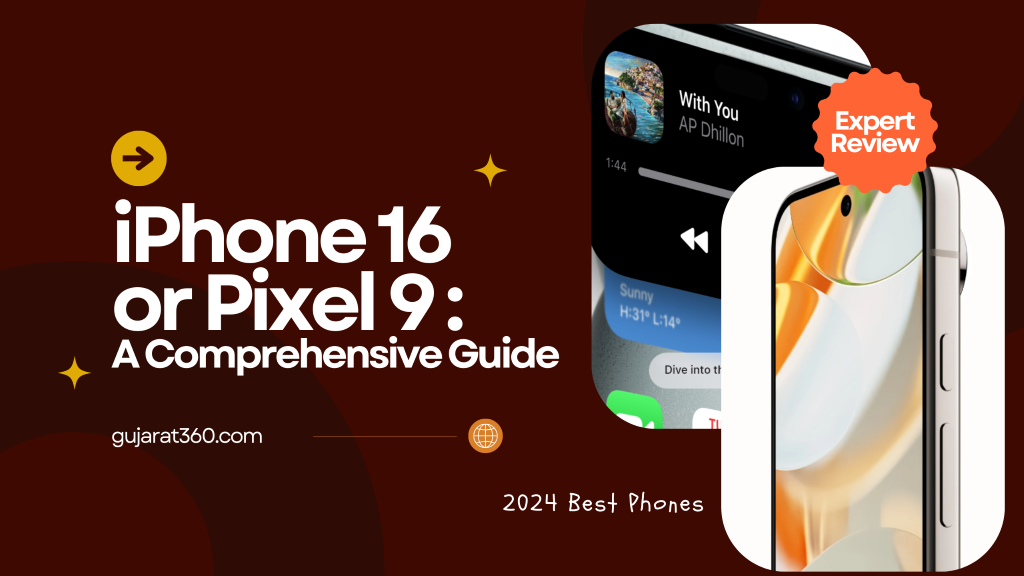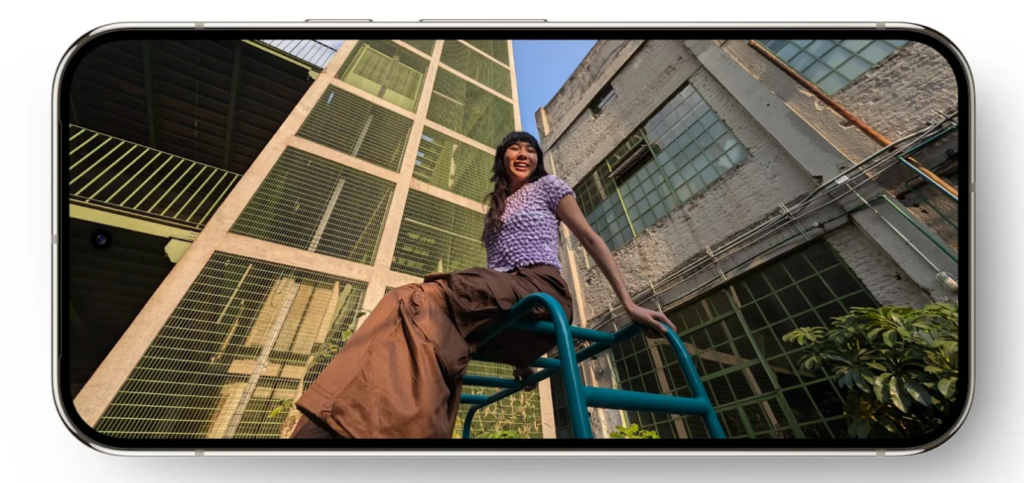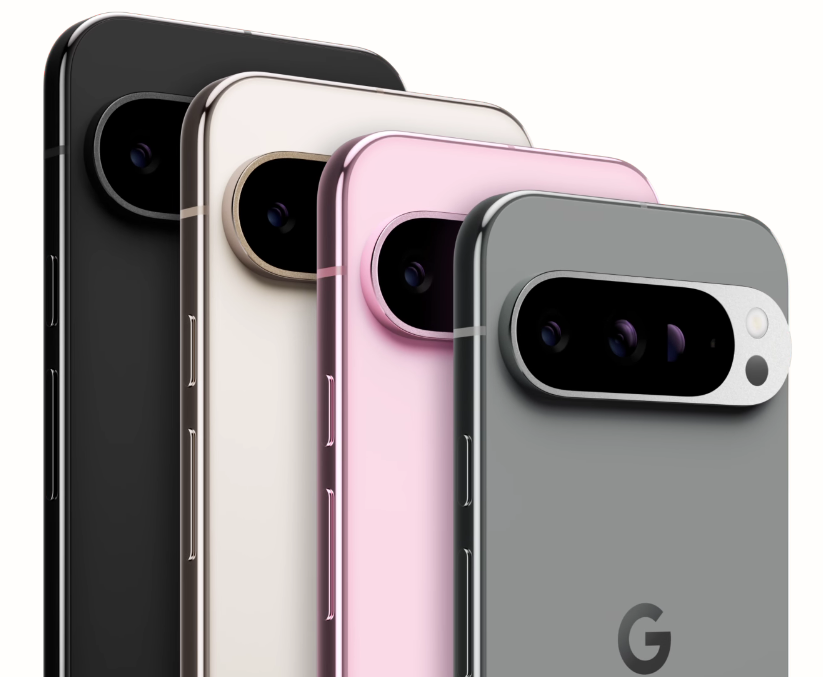iPhone 16 or Pixel 9: A Comprehensive Analysis and Review on Google Pixel 9 vs. iPhone 16

Iphone 16 or Pixel 9: The giants take position
In the ever-evolving landscape of smartphones, 2024 has ushered in two of the most anticipated devices: the Google Pixel 9 and the iPhone 16. Both brands are known for pushing the boundaries of technology, but which one truly stands out this year? This interactive blog delves into a detailed analysis, comparing the pros and cons, exploring reviews and trends, and offering a comprehensive comparative table to help you make an informed decision.
Design and Build Quality
Google Pixel 9:
The Pixel 9 retains the minimalist aesthetic Google is known for, with subtle refinements. The back is made from frosted glass, offering a smooth, premium feel. The device is slightly more rounded than its predecessor, ensuring a comfortable grip. The color options are more vibrant this year, with “Hazel Green,” “Stormy Black,” and “Cloud White” leading the charge. The camera bump remains, but it’s less pronounced, blending better with the overall design.
iPhone 16:
Apple continues its tradition of sleek, high-end design with the iPhone 16. This year’s model is slightly thinner and lighter, making it one of the most portable devices in its class. The aerospace-grade aluminum and ceramic shield provide a robust yet elegant build. The iPhone 16 comes in classic Apple colors like “Midnight,” “Starlight,” and a new “Deep Purple.” The triple-camera system is now housed in a seamless glass panel, which not only looks good but also improves durability.
Pros and Cons:
| Feature | Google Pixel 9 | iPhone 16 |
| Design | Minimalist, vibrant colors, comfortable grip | Sleek, lightweight, premium materials |
| Build Quality | Frosted glass, subtle camera bump | Aluminum and ceramic shield, seamless glass panel |
| Durability | Scratch-resistant, but prone to fingerprint smudges | Extremely durable, better resistance to drops |
| Ergonomics | Comfortable grip, slightly thicker | Ultra-thin, lightweight, more portable |
| Cons | Fingerprint smudges, not as lightweight | No major design innovation, fragile glass back |
Display and Performance

Google Pixel 9:
The Pixel 9 sports a 6.4-inch OLED display with a 120Hz refresh rate. Google’s new “Adaptive Brightness Pro” ensures optimal brightness in all lighting conditions, while the “True Tone” technology offers a natural color balance. The display is sharp, with vibrant colors and deep blacks, making it ideal for both media consumption and gaming. Powered by Google’s custom Tensor G3 chip, the Pixel 9 delivers top-notch performance, especially in AI-driven tasks like voice recognition and real-time translation.
iPhone 16:
Apple has equipped the iPhone 16 with a 6.1-inch Super Retina XDR display, featuring ProMotion technology that supports up to 120Hz refresh rates. The OLED panel offers incredible color accuracy, HDR support, and peak brightness levels that surpass its competitors. The new A18 Bionic chip powers the iPhone 16, boasting significant improvements in efficiency and processing power. This chip is particularly well-suited for augmented reality (AR) applications and high-performance gaming.
Pros and Cons:
Feature Google Pixel 9 iPhone 16
| Feature | Google Pixel 9 | iPhone 16 |
| Display Quality | OLED, 120Hz, vibrant colors, deep blacks | Super Retina XDR, 120Hz, high brightness, HDR |
| Performance | Tensor G3, AI-driven enhancements | A18 Bionic, efficient, AR-ready |
| Gaming Experience | Smooth, good for AI-based games | Excellent for high-performance games, AR features |
| Battery Life | Improved, but varies with use | Exceptional, longer-lasting |
| Cons | Not as bright as iPhone, battery life can vary | Slightly smaller display, expensive repairs for the screen |
Camera Capabilities

Google Pixel 9:
The Pixel series has always been known for its camera prowess, and the Pixel 9 is no exception. It features a dual-camera setup with a 50MP primary sensor and a 12MP ultra-wide lens. Google’s computational photography continues to impress, with enhanced Night Sight, Super Res Zoom, and the new “Magic Eraser Pro” that removes unwanted elements from photos. The front-facing camera is 12MP, offering sharp selfies and excellent video call quality.
iPhone 16:
Apple’s iPhone 16 raises the bar with a triple-camera system: a 48MP wide, 12MP ultra-wide, and a 12MP telephoto lens. The new “Cinematic Mode 2.0” allows for professional-grade video recording, with real-time depth adjustments and enhanced stabilization. Photographic Styles and ProRAW capabilities give users unprecedented control over their images. The front camera, also at 12MP, includes improved low-light performance and 4K video recording.
Pros and Cons:
| Feature | Google Pixel 9 | iPhone 16 |
| Primary Camera | 50MP, excellent in low light, Magic Eraser Pro | 48MP, Cinematic Mode 2.0, ProRAW |
| Ultra-Wide Lens | 12MP, wide field of view | 12MP, color consistency, distortion correction |
| Video Recording | 4K, smooth stabilization, good for casual videos | 4K HDR, Cinematic Mode, professional-grade |
| Selfie Camera | 12MP, sharp images, good for video calls | 12MP, low-light improvement, 4K video |
| Cons | Limited zoom range, no telephoto lens | Higher price, complex editing features may be overwhelming for casual users |
Software and User Experience
Google Pixel 9:
The Pixel 9 runs on Android 14, featuring a clean, bloatware-free experience with Google’s signature touch. The integration of AI in daily tasks is seamless, from predictive text to real-time translation and adaptive battery management. Google’s “Material You” design allows for extensive customization, with themes adapting to your wallpaper and preferences. The Pixel 9 also benefits from regular software updates directly from Google, ensuring long-term support.
iPhone 16:
The iPhone 16 operates on iOS 18, continuing Apple’s tradition of a smooth, intuitive user experience. The new “Focus” modes allow users to create custom profiles for work, personal time, and sleep, with tailored notifications and app behavior. iCloud integration is deeper, with shared libraries and enhanced privacy features. Apple’s App Store remains the best for quality apps, and the ecosystem’s tight integration makes switching between Apple devices seamless.
Pros and Cons:
| Feature | Google Pixel 9 | iPhone 16 |
| Operating System | Android 14, customizable, AI-driven | iOS 18, seamless, intuitive, secure |
| User Interface | Material You, adaptable, clean | Focus modes, deep iCloud integration |
| App Ecosystem | Google Play Store, vast but variable quality | Apple App Store, curated, high-quality |
| Updates and Support | Regular, direct from Google | Long-term, stable, regular updates |
| Cons | Android fragmentation, potential for inconsistent app quality | Limited customization, walled garden approach |
Battery and Charging
Google Pixel 9:
The Pixel 9 offers a 4,600mAh battery, which is an improvement over its predecessor. With optimized software and AI-driven battery management, the phone can comfortably last a full day with moderate use. It supports 30W wired charging, 18W wireless charging, and reverse wireless charging, allowing it to charge other devices in a pinch.
iPhone 16:
Apple has equipped the iPhone 16 with a 4,500mAh battery, but thanks to the efficiency of the A18 Bionic chip and iOS optimizations, the battery life is exceptional. The iPhone 16 supports 35W wired charging, 15W MagSafe wireless charging, and 5W reverse wireless charging. Apple’s ecosystem further enhances the battery experience with intelligent power management features.
Pros and Cons:
| Feature | Google Pixel 9 | iPhone 16 |
| Battery Capacity | 4,600mAh, all-day battery life | 4,500mAh, efficient, long-lasting |
| Charging Speed | 30W wired, 18W wireless, reverse charging | 35W wired, 15W MagSafe, reverse charging |
| Battery Management | AI-driven, adaptive battery | Intelligent power management, optimized for efficiency |
| Cons | Slightly slower wireless charging | MagSafe accessories can be expensive |
Comparative table for the Google Pixel 9 and iPhone 16
| Feature | Google Pixel 9 | iPhone 16 |
| Design | Minimalist, vibrant colors | Sleek, lightweight, premium materials |
| Display | 6.7-inch OLED, 120Hz refresh rate | 6.1-inch Super Retina XDR, 120Hz ProMotion |
| Processor | Google Tensor G3 | A18 Bionic |
| RAM | 8GB | 8GB |
| Camera | 50MP primary, 12MP ultra-wide | 48MP wide, 12MP ultra-wide, 12MP telephoto |
| Selfie Camera | 12MP, 4K video | 12MP, 4K video, improved low-light |
| Battery | 4,600mAh, 30W wired, 18W wireless | 4,500mAh, 35W wired, 15W MagSafe |
| Operating System | Android 14, customizable | iOS 18, seamless, secure |
| Storage Options | 128GB/256GB/512GB | 128GB/256GB/512GB/1TB |
| Price Range | Starting at $899 | Starting at $1,099 |
| Special Features | Magic Eraser Pro, AI-driven features | Cinematic Mode 2.0, ProRAW, AR capabilities |
| Updates | Direct from Google, regular | Long-term support from Apple |
User Reviews and Market Trends for iPhone 16 or Pixel 9
Google Pixel 9 Reviews:
Early adopters of the Pixel 9 have praised its camera capabilities, especially the Magic Eraser Pro, which has become a favorite for removing unwanted elements from photos. The AI-driven features like real-time translation and predictive text have also been well-received. However, some users have noted that the battery life, while improved, can still be inconsistent depending on usage patterns. The minimalist design appeals to those who prefer a clean and understated look, but it hasn’t made a significant departure from previous models.
iPhone 16 Reviews:
The iPhone 16 has received glowing reviews for its display quality, performance, and overall build. Users have particularly highlighted the Cinematic Mode 2.0, which allows for professional-level video editing directly on the device. The battery life has been lauded as one of the best in its class, and the seamless integration with other Apple devices continues to be a significant selling point. However, the high price point and the lack of major design innovations have been points of contention for some reviewers.
Market Trends:
In 2024, both Google and Apple are focusing heavily on AI and AR integration, which is evident in the Pixel 9 and iPhone 16. The shift towards more personalized, AI-driven user experiences is shaping the future of smartphones. The growing demand for high-quality cameras, especially with video capabilities, is pushing both brands to innovate further in this space. Additionally, sustainability is becoming a trend, with both companies making strides in using recycled materials and reducing their carbon footprints.
Final Verdict: Which One Should You Choose? iPhone 16 or Pixel 9?
- Choosing between the Google Pixel 9 and iPhone 16 ultimately comes down to your personal preferences and ecosystem allegiance.
- Choose the Google Pixel 9 if you:
- Prefer a minimalist design with vibrant color options.
- Value AI-driven features like real-time translation and predictive text.
- Want a high-quality camera experience with advanced photo editing tools like Magic Eraser Pro.
- Appreciate a more customizable and open operating system like Android.
- Seek good value for money at a slightly lower price point.
- Choose the iPhone 16 if you:
- Desire a sleek, lightweight design with premium materials.
- Need a powerful device for AR applications and high-performance gaming.
- Want professional-grade video capabilities with Cinematic Mode 2.0.
- Prefer the seamless integration of Apple’s ecosystem and long-term software support.
- Are willing to invest in a premium device with a slightly higher price tag.
- Both the Google Pixel 9 and iPhone 16 are top-tier devices that push the boundaries of what smartphones can do. Whether you’re a fan of Android’s flexibility or iOS’s polished experience, 2024 offers compelling options from both Google and Apple. As technology continues to evolve, it will be exciting to see how these two giants innovate and respond to the ever-growing demands of users.






